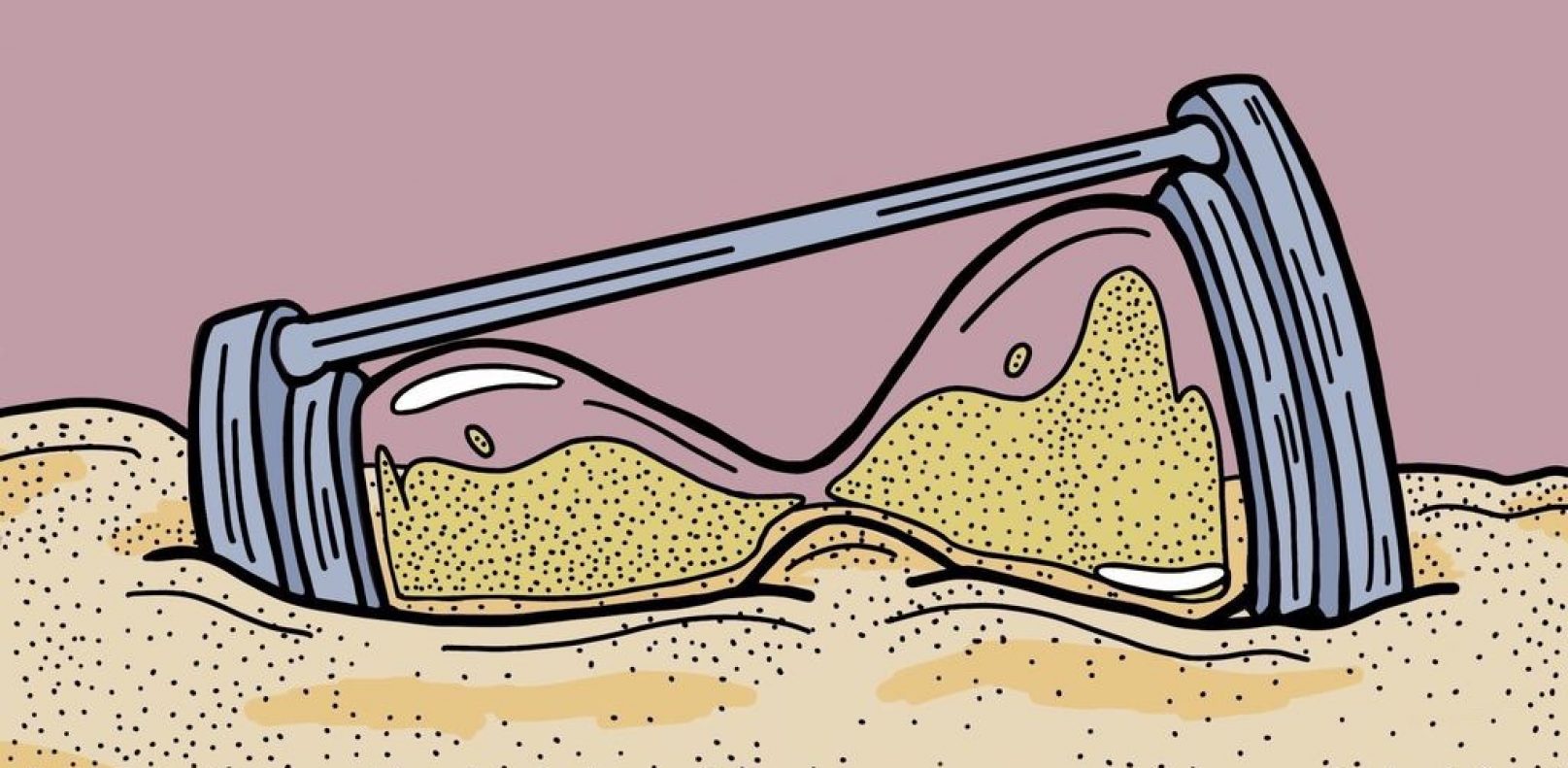Written by Luke Campbell
Father’s day, many years ago: I’m sitting on the beach on a rainbow beach towel. Waves rush and tumble over each other. I run my fingers through the sand, warm like french toast from the sun. The beach extends indefinitely in both directions. There’s sand in my hair, in the waves, in the ocean. Like stars running through my fingers, I perceived infinity on this planet for the first time contemplating the amount of sand on the beach. More grains in a square foot than seconds I will live, sprawled down an unending stretch of coast.
My brother, with a plastic bucket, almost obsessively creates rows of structures on the beach. He packs sand into the bucket, flipping it over to make another monolith, adding to his city of sand.
In my experience, human dominion over the planet becomes difficult to conceptualize because we can’t see carbon or, sitting on Virginia Beach, I can’t notice a rise in sea levels. It seems hard to believe that the summation of human actions has fundamentally altered the planet’s course. The web of consequences and scope of change humans have enacted becomes muddied in its sheer, far-reaching complexity.
Put simply, my point in writing is this: we are running out of sand. People are killing each other over access to mining sand. We are quickly overconsuming what struck me as the most obvious manifestation of infinity on Earth. Even as I sat on the beach years ago, contemplating the endlessness of the planet, companies were shipping sand around the globe, sand stripped from beaches, islands, and rivers.
Sand is a natural aggregate, in the same category as gravel and silt, the “world’s second most heavily exploited natural resource, after water” (Owen). We use more sand than we do oil in order to make, among other uses, glass, electronics, and concrete.
Around 75% of the constitution of concrete is sand. It takes 200 tons of sand to construct the average house, 3,000 tons for a hospital, and 15,000 tons for a mile of highway (Ludacer). But, to complicate our mammoth consumption of sand, a huge caveat: wind erodes desert sand into a shape too round to use in concrete; river sand, for example, is much more angular and ideal for construction. So, even as the world’s deserts grow, we continue to plunder rivers, beaches, and the thin layer of sand in the ocean.
Sand is also imported for “beach nourishment” programs to replenish eroding beaches or to build artificial islands, like the Palm Jumeirah in Dubai, a project which consumed “186.5 million cubic meters of marine sand” (Winkless). When companies rob ecosystems of their sand, or “replenish” the sand of quickly eroding beaches, they compromise the integrity of the ecosystem which rely foundationally on the microbial makeup in the sand specific to that ecosystem. The process of dredging sand “involves blasting powerful water jets at the seabed and riverbed,” which decimates breeding grounds and clouds the water which prevents light from reaching corals and aquatic plants (Winkless).
When sand is used to make concrete, or glass, it becomes immediately impractically difficult to transform the material back into sand, effectively locking sand away in this new form. Therefore, mining remains fiscally preferable.
A boom in urbanization, especially the explosion of construction in China (China used more concrete between 2011 and 2013 than the US did in the entire 20th century [Ludacer]) has led the price of sand to quintuple over the past 30-40 years (Ludacer) and to reports predicting that, using sand at this pace which vastly exceeds its slow, natural renewal, demand might outstrip supply by the mid-century (Bendixen, et al).
Much of the sand trade is undocumented. For example, “ between 2006 and 2016, less than 4% of the 80 million tonnes of sediment that Singapore reported having imported from Cambodia was confirmed as exported by the latter” (Bendixen, et al). The Sand Mafia has become “India’s strongest criminal organization” (Ludacer). Hundreds of people, including government officials, police officers, and citizens, have been killed for sand, for this illegal industry that generates $US2.3 billion a year (Winkless).
“Illegal sand mining has destroyed entire islands,” as two dozen Indonesian islands have disappeared (Ludacer). Dozens of Malaysian officials have been “charged with accepting bribes and sexual favors for importing the illegal sand” (Ludacer).
“In the Mekong delta, the Vietnamese government estimates that nearly 500,000 people will need to be moved away from river banks that are collapsing as a result of sand mining in the channel. In the Ganges River in northern India, eroded river banks have destroyed the nesting and breeding habitats of fish-eating gharial crocodiles (Gavialis gangeticus), a critically endangered species with only around 200 adults left in the wild in northern India and Nepal” (Bendixen, et al).
Through this messy web of environmental, social, and fiscal consequences, the extent of human domination over the planet becomes, well, concrete. That which seems infinite, the sand of all the world’s beaches and rivers, has already become scarce to a point of fueling bribery, deceit, and murder. We are dramatically and haphazardly overconsuming sand, dredging it directly from the hourglass of our planet. As the population of the world grows to ten billion by the mid-century, the need for concrete, glass, and electronics will only grow.

